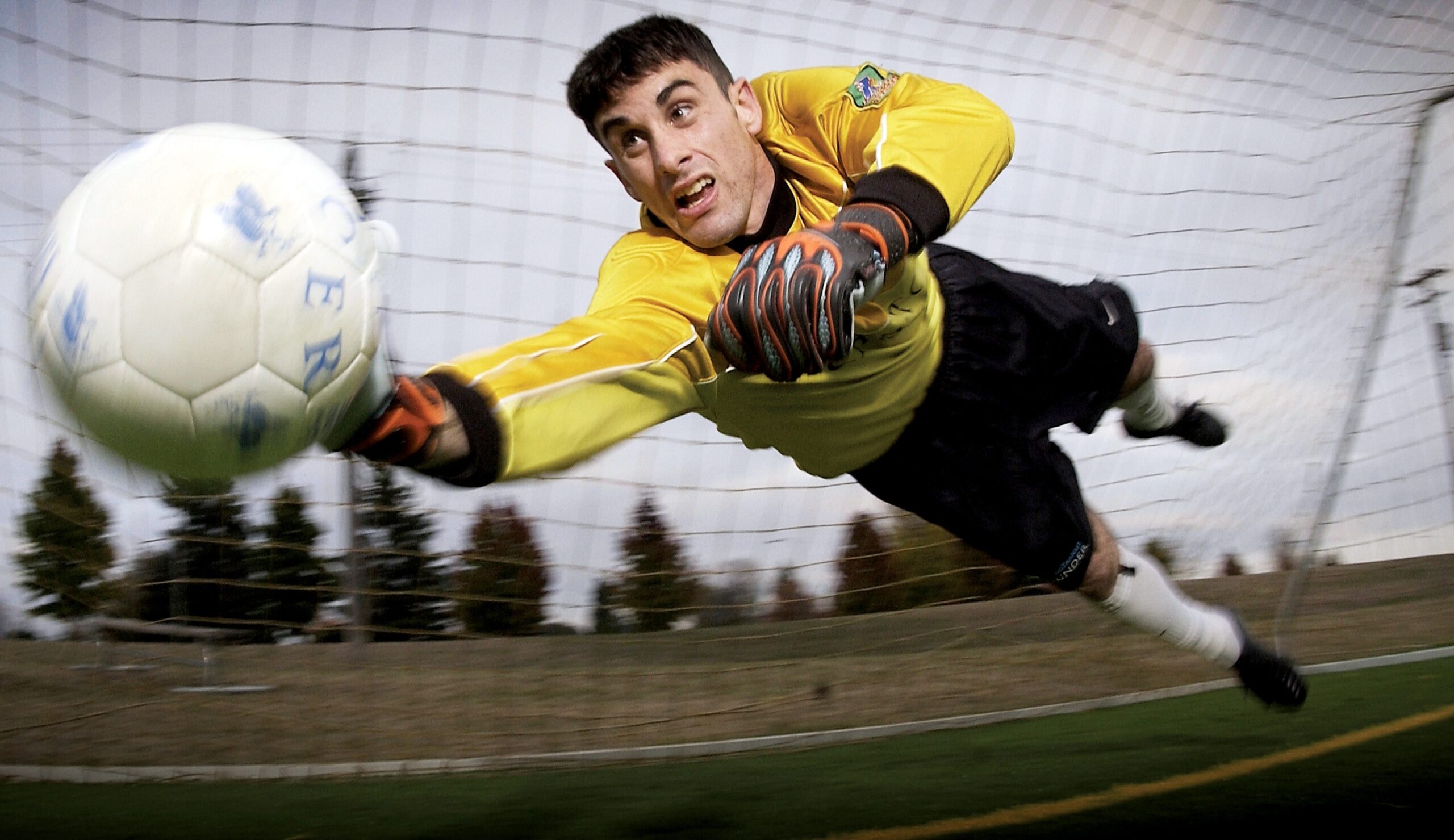Why were early soccer balls made with inflated sheep or pig bladders?

Even though soccer balls may seem like simple items, they are complex items and have gone through many changes to assume the form they have today. The soccer balls that you see and play with today were not what people played with when soccer was first introduced.
The first ever soccer balls created were crude since they were made using animal materials. Early soccer balls were nothing more than inflated animal bladders, usually sheep or pigs, and strips of leather to cover these balls.
However, soccer balls were modernized over the years and made better with rubber and other synthetic materials. Manufacturers and football associations also made these changes to ensure that the game remained fair. Due to the use of natural materials, two soccer balls could rarely ever be the same. Therefore, the game started to depend more on football and less on the player's skill.
Furthermore, the overall size and shape of the ball also changed based on the bladder. Therefore, soccer balls differed significantly, and the way the ball reacted when it was kicked or thrown also varied based on the bladder used in the balls.
With the introduction of rubber bladders, the soccer balls started to gain a more uniform shape. Vulcanized rubber was patented in 1836, and in 1855 the first-ever balls with these new rubbers were made. A few years later, in 1862, the inflatable runner bladders were made by Richard Lindon.
This discovery made by Lindon had a tragic past. His wife died at a young age from a disease, and he believed that she caught this disease by blowing up pig bladders that he sold to school children. Thus he was motivated to create a man-made bladder that would prevent anyone else from catching this disease.
Richard Lindon also developed a primary soccer ball pump that would enable the ball to be blown to a specific circumference. Therefore, the manufacturers would be able to control the shape and size of the balls and limit them to a standard size.
There was a need for the size to be uniform. Therefore, the Football Association in England brought about the first ever rules for the shape and dimension of footballs. Since the inception of these rules, they have remained in place to this day.
According to the rules, the ball needed to be a perfect sphere with a circumference between 27 and 28 inches. Later, committees also came together to declare that the weight of the soccer ball was to be 14 to 16 ounces. Since these rules were set, the materials and methods of making the ball have changed, but the overall dimensions have not.
In 1888, mass-production of footballs began by Mitre and Thomlinson of Glasgow because of the establishment of the English Football League in the same year. These mass-produced balls were made using strengthened leather and high-quality stitching. Therefore, the balls were more robust than before and retained their shape quite well.
However, there were still some differences in the balls because of the different materials used. The finest balls in those times were ones made of leather from the rump of a cow, and the cheaper balls were made out of the leather obtained from the shoulder of the cow.
Despite these differences, the soccer balls had improved quite a bit. As a result, the game became much more enjoyable for both the players and the fans. The ball was now a lot less temperamental, so the public was able to fully enjoy the skills of the player and not the way a specific ball responded to a player.
Even though the Football Association enforced its rules on the balls used in England, there was no uniformity in the design and size of the footballs used worldwide. Different countries used different-sized footballs; thus, the biggest international soccer matches often had issues.
The countries could not decide which ball to play with and when no decision was made, they decided to use one ball for one half and swap it with the other in the second half.
Why Use Sheep and Cow Bladder?
In the early days of soccer, the balls used to play the game were made of cow and bog bladder. Even though there were many issues with the size and shape of the ball, it took a long time for the world to give up on these bladders and change to rubberized or vulcanized rubber.
Cow and sheep bladders were so popular because they helped achieve that round shape, which was impossible to recreate with anything else. When inflated, the bladders of these animals became perfectly round, which was required of footballs.
Furthermore, these bladders also provided the players with balls with the perfect bounce. The balls were neither too bouncy that the ball control decreased, nor too less bouncy that the players had difficulty with them.
The method of preparing the balls was not enjoyable. Freshly cleaned out pigs' bladders were often collected for a nominal fee on slaughter days, and they were rinsed and left to soak in a tub of saturated saltwater and antibacterial solution in equal parts.
After 56 hours, the bladders were removed from the solution and rinsed again. They were then inflated by blowing air through them using a plastic tube. The bladders were then sealed using a string knot while removing the tube.
However, despite all the preparation that went into making the balls, it was rather distasteful. The balls would not last long and had to be re-inflated.
A Change in Soccer Balls
Due to such issues, the ball's bladder, once made with sheep and pig bladder, had to transform. At the beginning of the 20th century, the bladder of the balls changed, and rubber bladder balls started being used. The inner tube of these balls was covered in leather, thus improving the bounce of the ball.
The balls at this time were made using brown leather panels. There were 18 sections that were arranged in six panels. The manufacturing process of the soccer balls, albeit changed, was not perfect.
There were issues in the stitching of the balls, and the leather used had water retention properties. Therefore, the ball became heavy during wet conditions, and playing with it became painful and sometimes outright dangerous. Furthermore, the ball became heavier and heavier as the match went on, and sometimes, either the ball had to be changed, or the game had to be stopped altogether.
To resolve this issue, a waterproof cover was needed. In the 1940s, cloths were added between the bladder and the outer leather, and these cloths acted as a layer of damp proofing and added strength to the ball.
In later years, paints and other porous materials were also spread across the cover to reduce the amount of water absorption.
The Modern Soccer Ball
The modern soccer ball takes a different approach to bladders and mostly makes them out of Butyl or latex. Butyl bladders blend together synthetic elastomers to create rubber, and Butyl is one of the main ingredients that helps the ball with air retention.
The Butyl added must be of limited quantity as more Butyl can cause a degradation of the ball's bounce, making it more expensive. Furthermore, it can also make the ball feel brutal and unforgiving. Therefore, the amount of Butyl used must be limited.
The other kinds of bladders used today are latex bladders. Latex itself is a softer material and is excellent for being used in bladders of soccer balls. However, one downside is that it does not hold air together as well as butyl bladders. Therefore, latex bladder balls need to be re-inflated more often.
However, many players prefer latex balls because they feel softer, which is better for the players. You can also find many cheap balls that use latex rubber.
Synthetic rubber is also often used to make soccer balls. Manufacturers used this material to find a middle ground between the softness of latex balls and the retention of butyl balls. Synthetic rubbers do an excellent job of exhibiting both qualities. Furthermore, they can be made in a wide variety of grades.
Conclusion
Having soccer balls with sufficient bounce and air retention is necessary. Furthermore, following the standards set by FIFA is also essential. Therefore, throughout soccer's history, football manufacturers had to let go of the age-old way of using animal bladders to make soccer balls.
Pig and sheep bladder allowed the soccer balls to form the needed round shape, and it also added that bounce that allowed the ball to be kicked and played with. However, the lack of standardization meant that the manufacturers had to search for new ways to make soccer ball bladders.
The answer came in the form of different kinds of rubber.




